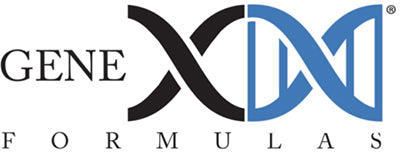WHAT IS NAD+?
Before we answer the question of what NAD+ is, perhaps we should start by exploring what this whole NAD fuss is all about. Scientists have discovered that as we get older, our NAD+ levels steadily decrease, and by the time we get to our late 70s and 80s, our NAD+ levels appear to be very much lower, than those of younger people.

So what does this all mean? Is there a link?
Well, the science is starting to clearly show a definite correlation between falling NAD levels and an age-related decline in health & wellness. In 2013 Harvard researchers published a study, where they were able to reverse some parts of aging by treating old mice with Nicotinamide Mononucleotide (NMN), a direct NAD+ precursor supplement. After ten days of treatment, key biometrics markers of the mice that were measured resembled those of much younger mice. For the first time, we have real evidence that some aspects of aging may be reversible. In 2017 the same research team published a follow-up article. It demonstrated a new understanding of how NAD+ is not only used to repair damaged DNA but how it also stimulates the repair process. It does this by blocking another protein called DBC1 that interferes with the PARP-1 DNA Repair enzyme.This is a key finding because of a long-held understanding of the aging process was due to the accumulation of DNA damage.
NAD (Nicotinamide Adenine Dinucleotide) is a molecule found in all living cells and is essential for life. It exists in two forms, NAD+ the oxidized form and NADH the reduced form. NAD is responsible for many critical cell functions, such as energy metabolism, mitochondrial function, calcium hemostasis and gene expression.
Read the article Scientist Can Reverse Aging in Mice
What is Nicotinamide Mononucleotide?
NMN is an entirely natural compound found in our bodies. It is also present in various food sources such as edamame, broccoli, cabbage, cucumber, avocados, and tomatoes. NMN is a direct and potent NAD+ precursor supplement.

12 Month long Evaluation of NMN Supplementation in Mice
A 12-month long study carried out by the University of Washington St Louis (as published in Cell Metabolism), found that oral supplementation of NMN in mice was safe and effective at improving NAD+ levels. Mice, supplemented with NMN vs. a control group, showed remarkable age-associated differences in body weight gain, energy metabolism, blood sugar, lipid metabolism, gene expression changes, mitochondrial oxygen use, eye function, bone density and immune function with no apparent toxic effects.
The study showed that oral administration of NMN was quick to action, effectively raising NAD+ levels in minutes. NMN showed a sharp increase in the blood measurement after only 2.5 minutes. It increased NAD+ levels in the liver in just 10 minutes and muscle tissue by 30 minutes.
What is Mitochondria?
The Mitochondria is regularly called the powerhouse of the cell. This is because most of the chemical energy needed to sustain life is produced inside the mitochondria by a process called oxidative phosphorylation that produces ATP. The mitochondria are NAD-dependent for functional mechanics and coordination with the cell Nucleus.
2018
2017
1. Nicotinamide mononucleotide inhibits JNK activation to reverse Alzheimer disease (Yao)
3. Nicotinamide Mononucleotide, an NAD+ Precursor, Rescues Age-Associated Susceptibility to AKI in a Sirtuin 1-Dependent Manner (Guan)
6. Modulating NAD+ metabolism, from bench to bedside (Auwerx)
7. Aspects of Tryptophan and Nicotinamide Adenine Dinucleotide in Immunity: A New Twist in an Old Tale. (Rodriguez)
8. Vitamin B3 modulates mitochondrial vulnerability and prevents glaucoma in aged mice (Williams)
9. NAMPT-mediated NAD biosynthesis as the internal timing mechanism: In NAD+ World, time is running in its own way (Poljsak)
10. Ketone bodies mimic the life span extending properties of caloric restriction (Veech)
12. Ketogenic Diet Reduces Midlife Mortality and Improves Memory in Aging Mice (Newman,)
13. Inhibiting poly ADP-ribosylation increases fatty acid oxidation and protects against fatty liver disease(Gariani)
14. NAD+ Deficits in Age-Related Diseases and Cancer(Garrido)
15. Adenosine Monophosphate (AMP)-Activated Protein Kinase: A New Target for Nutraceutical Compounds (Marin-Aguilar)
16. Ketogenic Diet Reduces Midlife Mortality and Improves Memory in Aging Mice (Newman)
17. A Ketogenic Diet Extends Longevity and Healthspan in Adult Mice (Roberts)
19. Bioenergetic state regulates innate inflammatory responses through the transcriptional co-repressor CtBP (Shen)
22. NAD+ Intermediates: The Biology and Therapeutic Potential of NMN and NR (Yoshino)
23.Nicotinamide riboside kinases display redundancy in mediating nicotinamide mononucleotide metabolism in skeletal muscle cells (Fletcher)
24.Why are depressed patients inflamed? (Pariante)
25.Caloric restriction delays age-related methylation drift (Maegawa)
26.NAMPT-Mediated NAD Biosynthesis as the Internal Timing Mechanism:In NAD+ World, Time Is Running in Its Own Way (Poljsak)
27.Anti-inflammatory Therapy with Canakinumab for Atherosclerotic Disease (Ridker)
28.Nicotinamide mononucleotide attenuates brain injury after intracerebral hemorrhage (Wei)
30. Effect of “Nicotinamide Mononucleotide” (NMN) on Cardiometabolic Function (NMN)
2016
2.NAD+ metabolism: Bioenergetics, signaling and manipulation for therapy (Yang)
3.NAD+ replenishment improves lifespan and healthspan in ataxia telangiectasia models via mitophagy and DNA repair (Fang)
4.Nicotinamide riboside opposes type 2 diabetes and neuropathy in mice (Trammell)
5.ß-Nicotinamide Nicotinamide riboside is uniquely and orally bioavailable in mice and humans (Trammell)
6.Mononucleotide, an Anti-Aging Candidate Compound, Is Retained in the Body for Longer than Nicotinamide in Rats (Kawamura)
7. The first human clinical study for NMN has started in Japan (Tsubota)
8.Nicotinamide mononucleotide protects against ß-amyloid oligomer-induced cognitive impairment and neuronal death (Wang)
11. Nicotinamide mononucleotide supplementation reverses vascular dysfunction and oxidative stress with aging in mice(de Picciotto)
12. Novel NAD+ metabolomic technologies and their applications to Nicotinamide Riboside interventions(Trammel)
13. Long-term moderate calorie restriction inhibits inflammation without impairing cell-mediated immunity (Meydayni)
14. ß-Hydroxybutyrate: A Signaling Metabolite in starvation response (Morales)
15. Novel ketone diet enhances physical and cognitive performance (Murray)
16. ß-Hydroxybutyrate suppresses inflammasome formation by ameliorating endoplasmic reticulum stress via AMPK activation (Bae)
17. Effects of Exhaustive Aerobic Exercise on Tryptophan-Kynurenine Metabolism in Trained Athletes (Strasser)
18. Dietary restriction with and without caloric restriction for healthy aging (Lee)
20. NAMPT- mediated NAD(+) biosynthesis is essential for vision in mice (Lin)
21. NAD+ replenishment improves lifespan and healthspan in ataxia telangiectasia models via mitophagy and DNA repair (Fang)
22. Nicotinamide riboside is uniquely and orally bioavailable in mice and humans(Trammell a)
23. Nicotinamide riboside opposes type 2 diabetes and neuropathy in mice(Trammell b)
24. Dietary proanthocyanidins boost hepatic NAD+ metabolism and SIRT1 expression and activity in a dose-dependent manner (Aragon’s)
25. Comparative effects of carbohydrate versus fat restriction on metabolic profiles, biomarkers of inflammation (Raygan)
26.NAD? repletion improves mitochondrial and stem cell function and enhances life span in mice. (Zhang)
27. Hepatic NAD+deficiency as a therapeutic target for non-alcoholic fatty liver disease in aging (Zhou)
28. Loss of NAD Homeostasis Leads to Progressive and Reversible Degeneration of Skeletal Muscle(Fredrick)
2015
1.Effective treatment of mitochondrial myopathy by nicotinamide riboside, a vitamin B3 (Khan)
4. The ketone metabolite ß-hydroxybutyrate blocks NLRP3 inflammasome–mediated inflammatory disease (Youm)
5. Regulation of AMP-activated protein kinase by natural and synthetic activators (Hardie)
6. Interventions to Slow Aging in Humans: Are We Ready? (longo)
7. A Periodic Diet that Mimics Fasting Promotes Multi-System Regeneration, Enhanced Cognitive Performance, and Healthspan (Longo)
8. Resistance Exercise Training Alters Mitochondrial Function in Human Skeletal Muscle (Porter)
9. Chlorogenic Acid Improves Late Diabetes through Adiponectin Receptor Signaling Pathways in db/dbMice (Chang)
10. NK cells link obesity-induced adipose stress to inflammation and insulin resistance (Wensveen)
11. The “Big Bang” in obese fat: Events initiating obesity-induced adipose tissue inflammation (Wensveen)
12.DNA methylation age of blood predicts all-cause mortality in later life (Marioni)
14.1.NAD+ metabolism and the control of energy homeostasis – a balancing act between mitochondria and the nucleus (Canto)
2104
1.Nicotinamide mononucleotide, an intermediate of NAD+ synthesis, protects the heart from ischemia and repercussion (Yamamoto)
2.NAD+ and sirtuins in aging and disease (Imai)
3.Effective treatment of mitochondrial myopathy by nicotinamide riboside, a vitamin B3 (Khan)
4. Ketone bodies as signaling metabolites (Newman)
5. Effective treatment of mitochondrial myopathy by nicotinamide riboside, a vitamin B3 (Khan)
6. The effect of different exercise regimens on mitochondrial biogenesis and performance (Philander)
8. Effect of exercise intensity on post-exercise oxygen consumption and heart rate recovery (Mann)
10.Interleukin-6, Age, and Corpus Callosum Integrity (Bettcher)
2013
1.Declining NAD+ Induces a Pseudohypoxic State Disrupting Nuclear-Mitochondrial Communication during Aging (Gomes, Sinclair)
2. Anti-diabetic and anti-lipidemic effects of chlorogenic acid are mediated by ampk activation (Ong)
3. Ketone body metabolism and cardiovascular disease. (Cotter)
4. Nutritional Ketosis Alters Fuel Preference and Thereby Endurance Performance in Athletes (Cox)
5. The NAD(+)/sirtuin pathway modulates longevity through activation of mitochondrial UPR and FOXO signaling. (Mouchiroud)
2012
2. The dynamic regulation of NAD metabolism in mitochondria (Stein)
4. Dietary leucine stimulates SIRT1 signaling through activation of AMPK (Hongliang)
5. The Ketogenic Diet as a Treatment Paradigm for Diverse Neurological Disorders (Stafstrom)
6.Association between Serum Interleukin-6 Concentrations and Mortality in Older Adults (Lee)
2011
1.NAD blocks high glucose induced mesangial hypertrophy via activation of the sirtuins-AMPK-mTOR pathway (Zhuo)
3. The effect of the Spanish Ketogenic Mediterranean Diet on nonalcoholic fatty liver disease: a pilot study. (Guisado)
4. PARP-1 inhibition increases mitochondrial metabolism through SIRT1 activation (Bai)
5. NAD blocks high glucose induced mesangial hypertrophy via activation of the sirtuins-AMPK-mTOR pathway (Zhuo)
6. A 45-minute vigorous exercise bout increases metabolic rate for 14 hours (Knab)
2010
2009
1.Detection and pharmacological modulation of nicotinamide mononucleotide (NMN) in vitro and in vivo (Formentini)
2.AMPK regulates energy expenditure by modulating NAD+ metabolism and SIRT1 activity (Cato)
3. Neuroendocrine Factors in the Regulation of Inflammation: Excessive Adiposity and Calorie Restriction (Fontana)
4. The neuroprotective properties of calorie restriction, the ketogenic diet, and ketone bodies. (Maalouf)
2008
2006
1. Are We All Pre-Diabetic?(Stokel,2016)
2.Baseline levels of C-reactive protein and prediction of death from cardiovascular disease (Goodson)
2004
2003
A randomized trial of a low-carbohydrate diet for obesity (Foster)

